A top-level domain (TLD) is one of the domains at the highest level in the hierarchical Domain Name System of the Internet after the root domain. The top-level domain names are installed in the root zone of the name space. For all domains in lower levels, it is the last part of the domain name, that is, the last non empty label of a fully qualified domain name. For example, in the domain name www.example.com, the top-level domain is .com. Responsibility for management of most top-level domains is delegated to specific organizations by the ICANN, an Internet multi-stakeholder community, which operates the Internet Assigned Numbers Authority (IANA), and is in charge of maintaining the DNS root zone.
A domain name is a string that identifies a realm of administrative autonomy, authority or control within the Internet. Domain names are often used to identify services provided through the Internet, such as websites, email services and more. As of 2017, 330.6 million domain names had been registered. Domain names are used in various networking contexts and for application-specific naming and addressing purposes. In general, a domain name identifies a network domain or an Internet Protocol (IP) resource, such as a personal computer used to access the Internet, or a server computer.
A domain name registry is a database of all domain names and the associated registrant information in the top level domains of the Domain Name System (DNS) of the Internet that enables third party entities to request administrative control of a domain name. Most registries operate on the top-level and second-level of the DNS.
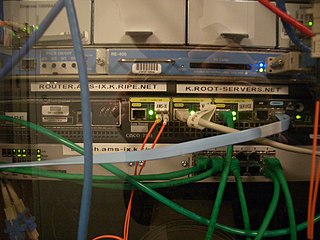
A root name server is a name server for the root zone of the Domain Name System (DNS) of the Internet. It directly answers requests for records in the root zone and answers other requests by returning a list of the authoritative name servers for the appropriate top-level domain (TLD). The root name servers are a critical part of the Internet infrastructure because they are the first step in resolving human-readable host names into IP addresses that are used in communication between Internet hosts.

The domain name gov is a sponsored top-level domain (sTLD) in the Domain Name System of the Internet. The name is derived from the word government, indicating its restricted use by government entities. The TLD is administered by the Cybersecurity and Infrastructure Security Agency (CISA), a component of the United States Department of Homeland Security.
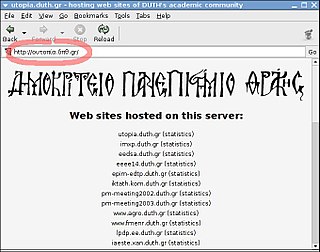
An internationalized domain name (IDN) is an Internet domain name that contains at least one label displayed in software applications, in whole or in part, in non-latin script or alphabet, such as Arabic, Bengali, Chinese, Cyrillic, Devanagari, Greek, Hebrew, Hindi, Tamil or Thai or in the Latin alphabet-based characters with diacritics or ligatures, such as French, German, Italian, Polish, Portuguese or Spanish. These writing systems are encoded by computers in multibyte Unicode. Internationalized domain names are stored in the Domain Name System (DNS) as ASCII strings using Punycode transcription.

.uk is the Internet country code top-level domain (ccTLD) for the United Kingdom. It was first registered in July 1985, seven months after the original generic top-level domains such as .com and the first country code after .us.
A country code top-level domain (ccTLD) is an Internet top-level domain generally used or reserved for a country, sovereign state, or dependent territory identified with a country code. All ASCII ccTLD identifiers are two letters long, and all two-letter top-level domains are ccTLDs.
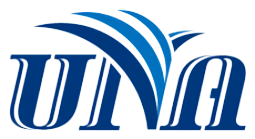
.an was the Internet country code top-level domain (ccTLD) for the former Netherlands Antilles. It was administered by the University of the Netherlands Antilles. The domain was phased out after the Netherlands Antilles were dissolved in 2010. As of November 2010 the .an domain remained live with over 800 domains registered under .an, including secondary levels. On 31 July 2015, use of the domain was discontinued.
.ao is the Internet country code top-level domain (ccTLD) for Angola. It was originally administered by the college of engineering of the University of Agostinho Neto before being redelegated to the Ministry of Telecommunications and Information Technologies.
.be is the Internet country code top-level domain (ccTLD) for Belgium. As of November 2022 there are 1,746,459 registered domains.
The JANET NRS was a pseudo-hierarchical naming scheme used on British academic and research networks in the 1980s. It used a reverse domain name notation.
The domain name arpa is a top-level domain (TLD) in the Domain Name System (DNS) of the Internet. It is used predominantly for the management of technical network infrastructure. Prominent among such functions are the subdomains in-addr.arpa and ip6.arpa, which provide namespaces for reverse DNS lookup of IPv4 and IPv6 addresses, respectively.
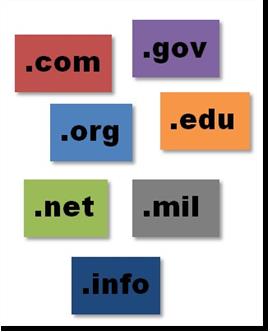
Generic top-level domains (gTLDs) are one of the categories of top-level domains (TLDs) maintained by the Internet Assigned Numbers Authority (IANA) for use in the Domain Name System of the Internet. A top-level domain is the last level of every fully qualified domain name. They are called generic for historical reasons; initially, they were contrasted with country-specific TLDs in RFC 920.
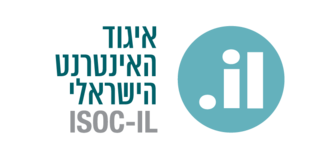
.il is the Internet country code top-level domain (ccTLD) of Israel, administered by the Israel Internet Association and managed by NIC - ISRAEL, which hosts the DNS root server and manages the Israeli Internet Exchange, that supports IPv4 and IPv6.

.tw is the Internet country code top-level domain (ccTLD) for Taiwan. The domain name is based on the ISO 3166-1 alpha-2 country code TW. The registry is maintained by the Taiwan Network Information Center (TWNIC), a Taiwanese non-profit organization appointed by the National Communications Commission (NCC) and the Ministry of Transportation and Communication. Since 1 March 2001, TWNIC has stopped allowing itself to sign up new domain names directly, instead allowing new registration through its contracted reseller registrars.
.mm is the Internet country code top-level domain (ccTLD) for Myanmar. It was assigned in 1997. Before 1989, the ISO 3166 alpha-2 code for Burma was BU, but no .bu ccTLD was assigned.

.gw is the Internet country code top-level domain (ccTLD) for Guinea-Bissau.

.pa is the Internet country code top-level domain (ccTLD) for Panama. It was first registered in 1994-05-25. It is administered by NIC Panamá, which is run by the Universidad Tecnologica de Panama.










